
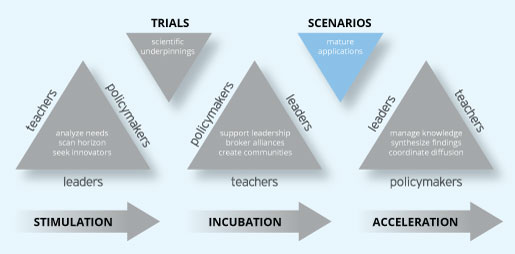
Scenarios exemplify, in scalable ways, how the intended outcomes can be achieved. Key elements for the scenarios are the contexts, the resources, the tools, the scaffolds, the impacts on school innovation and the lessons learned.
The triad: scenario in action, resource-based learning and school innovation
What is the interplay among them and how can research inform our efforts?
Classroom-wide scenario in action School-wide scenario in action National-wide scenario in action |
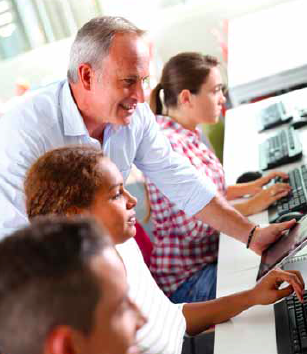 |
How does it work?
What is it that will facilitate a large number of teachers, schools and learning communities to adopt resource-based learning in their everyday practices? What can we do about that?
Scenarios in action transition innovation work from the Incubation to the Acceleration phase. Scenarios are propelled by the change-agent teachers and supported by external agents (e.g. national coordinators). Both the people, and the innovation itself influence the ways in which scenarios unfold. In his classic work on diffusion, Rogers identified characteristics of innovations that determine their uptake and use. These characteristics are woven throughout an example of a change-agent scenario:
- Relative advantage: What’s the added value?
- Compatibility: Will this change require other changes?
- Complexity: How detailed is the change?
- Trialability: Can I experiment with it before committing?
- Observability: Can I see it in action?
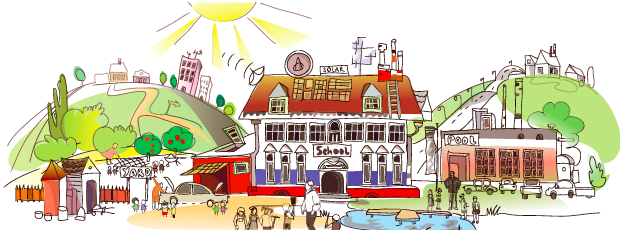
Real life examples
Change agent scenario
Mr. Alexandros Kofteros, Cyprus teacher in a disadvantaged school, managed to attract five other teachers from the same school to the ODS organisation and implementation process during scenarios in action. The participant teachers put a lot of hard work, while exemplifying many evidences of engagement and commitment. Finally, they decided to present their work to the national contest for the best ICT-infused scenario, organised by the Pedagogical Institute of Cyprus. During this process, the presentation skills of the participant teachers were greatly enhanced. The result was that two out of the five scenarios, presented by the participant teachers from the school of Mr. Kofteros, were rewarded in the final contest with prizes for innovation (Creating a model of Chirokitia Neolithic settlement using a 3D printer) and good practice (Learning about myself and others).
The hidden curriculum behind this scenario in action is related to how a disadvantaged school can become a school innovation center. Also, it exemplifies the importance of triggering the intrinsic motivation of the participant teachers in tandem with the courage and determination of the change-agent teacher. Another lesson learnt is related to the crucial role of the change agent teachers, provided that they have realised their roles, as well as, to how satisfying are reward systems and recognition for the hard working teachers (observability).
The change agent teacher of the disadvantaged school often quotes John Woods by saying: “The player who makes the team great is more valuable than a great player. Losing yourself in the group, for the good of the group, that’s teamwork!”
Another enabler is the close relationship of the learning topics with topics of the curriculum: the participant teachers were challenged to use resources and tools in order to serve their learning goals, while gaining important ICT and presentation skills throughout this process (trialability). Taking into account their relationship with RBL and school innovation, scenarios in action might best be described using the structure of Hill & Hannafin (2001).
- Context, which includes a set of similar settings or learning situations in which the scenario in action can be applied successfully (like: combining formal with informal learning, enhance teacher motivation, foster self-regulating learning, use the affordances of learning analytics, provide community support mechanisms etc).
- Resources that are “media, people, places or ideas that have the potential to support learning”
- Tools that “aid individuals to engage and manipulate resources and ideas”
- Scaffolds through which “individuals are supported in identifying, interpreting, or otherwise using resources”
- Process description (data-->information--> knowledge-->meaning): how was this process established?
- Impact with regards to school innovation: how was school innovation fostered and/or sustained?
- Lessons learned (trialability): how can this scenario in action be generalized and transferred to other similar settings or learning situations? Which of the main actions included in the incubating phase trigger outcomes of the accelerating phase? And which outcomes are those?
Creating a model of Chirokitia Neolithic settlement using a 3D printer
Context
Based on an initiative to develop 3D printing, schools formed collaborations and worked in developing original content. Eventually, 3D models of the ancient Chirokitia settlement were created. Students from four different grades (aged 9-12 years) and educators that teach three different knowledge domains (history, technology and maths) participated. Participants engaged in a cross-disciplinary project with various forms of learning and multiple sources of information.
Resources
3D printing is an innovative teaching and learning practice. The ODS 3D printing @ Schools Community focuses on discussing and organising 3D printing actions, in order to address learning and teaching needs with poweful digital and physical representations while reusing existing infrastructure in a dynamic pedagogical context. Aim of this community is to raise teachers awareness on 3D printing, organise training events on design, use and deployment of design software and 3D printing infrastructures in schools and elsewhere, initiate cross discipline, augmented reality driven, projects between schools and other institutions using, mainly, 3D design and printing activities (relative advantage).
Tools
M
obile devices, an easy-to-use 3D CAD tool for modelling 3D designs, history educational software and 3D printer.
Scaffolds
Students were supported by their educators (through dialogue and especially designed worksheets). The teachers were supported by the change-agent teacher (reduced complexity) and also they helped each other (reduced complexity, observability), since the project was a cross-disciplinary one.
Process description
An educational visit to the settlement in the context of the history course where data about the settlement were gathered (mobile learning, evidence-based learning); creation of a digital replication of the monument by modelling a 3D representation through a cross-disciplinary approach that combined mathematics (volume and area of 3D shapes, ratio and analogies) and technology education (3D modelling and 3D printing).
Impact
Regarding to school innovation, this scenario embraces project-based learning and mobile learning in conjunction with evidence-based learning (students are learning outdoors using mobile devices to collect evidences) while bridging informal with formal learning. Also, it embraces all kinds of collaboration (teacher-teacher, student-student and student-teacher). Finally, it has provided insights to the participant teachers about the affordances of mobile learning (Relative advantage). By the end of the project the participants had a holistic idea about life in the ancient Chirokitia Neolithic settlement.
Lessons learnt
RBL as a means of providing a) a protective environment to enable the collaboration and the exchange of knowledge between colleagues and b) an intriguing learning environment with lots of cognitive and social stimuli to enable peer learning between students. Also, unintended learning on behalf of the participant teachers in their effort to design an ICT-infused learning “ecosystem” that would best serve the learning goals and the students’ needs.
Read more
http://portal.opendiscoveryspace.eu/blog/alexandroskofteros/20130603-433
http://portal.opendiscoveryspace.eu/community/3d-printing-schools-community-270
https://tinkercad.com/
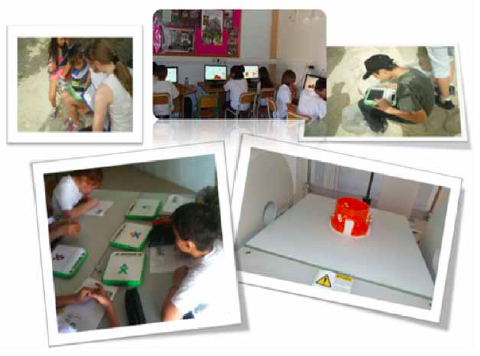
Love of reading: Learning about myself and others
Context
A common project between 4 schools (1 in Cyprus and 3 in Greece) based on the book “Lit Book of the Great Psychological Opposites” (Oscar Brenifier). Schools came together through their participation in the ODS project. Even though material was developed (and shared) by the participating teachers, additional digital resources were used, saving time and effort for all involved in the project (relative advantage).
Resources
The idea was to change the attitudes of the students towards reading books - instill to them the love of reading- while they learn about themselves and others. Towards this end, a social constructivist approach was followed and an online community of interest was created (compatibility). The book “Lit Book of the Great Psychological Opposites” was used as the basis for the creation of the digital resources, the forum was used to enable asynchronous communication, the webconferencing system and the chat were used for synchronous sessions, a digital glossary was shared among participants, online quizzes were generated for assessment purposes and, finally, a range of open-ended activities were created to serve the learning goals.
Tools
The open-source web conferencing system “Big Blue Button” a customised version of the “Moodle” open source Learning Management System,) other elearning services, like linoit, a free sticky and canvas service, and a projector
Scaffolds
“Bookie” a pedagogical agent, integrated in the moodle e-course, designed by the participant teachers; its aim was to help students (conceptual and procedural scaffolds) while they were coping with the respective learning tasks and to foster self-regulating learning. Also, teachers literally undertook the role of the avatar “Bookie” occasionally and facilitated the synchronous discussions in the chat. As already mentioned, the change agent teacher provided continuous support to the participant teachers throughout the scenario including their presentation in the contest. The change-agent teacher managed to reduce the complexity of the whole endeavour.
Process description
The students read the book, gained information about the 10 pairs of opposites unravelled in the book while wrapping their minds around abstract notions through the different types of activities (see section resources) and exercising their critical judgment.
Impact
The use of web 2.0 tools to foster an online community support mechanisms among participants (relative advantage). This scenario in action has:
- Bridged the gap between formal and informal learning (game-based activities were incorporated: hangman, crossword, wordsearch puzzle)
- Fostered collaborative learning and work within groups of students and teachers and across different schools,
- Motivated students to produce written word (through forum and chat), and
- Enhanced teachers’ skills and motivation. In particular, pupils were highly motivated by thought-provoking collaborative activities: they could present their ideas, share the results of their assignments and participate in discussions in order to extend their conclusions.
Lessons learned
A significant enabler was collaboration across schools from different cultures and change management experiences because they facilitated lateral learning (Hargreaves, 2003) between schools. This new paradigm of social learning created new forms of interaction. One of the major features included in the transformed education system, whose contours are coming into view is the presence of “rich, extended models of school organisation using networks and highly varied forms of learning to engage directly with wider communities and jointly produce the wider conditions under which successful educational attainment and learning take place” (Hargreaves, 2003). This scenario in action is the manifestation of this feature.
Read more
http://meetings.ellak.gr/bigbluebutton/
http://mathisis.org/
http://en.linoit.com/
Parents’ engagement & involvement: Meeting Parent Teacher Association (PTA)
Context
Parents are always seeking ways to boost their children’s interest in learning, however they don’t always possess the knowledge to identify which content is suitable for them. During the school year, teachers might be able to point to certain content, but during school holidays a teacher is not always (physically) available. Various solutions exist for communication with parents, including student information systems, web sites, email etc. In many cases, schools use blogs, Facebook and Twitter accounts or even forums and email to communicate with families. Recognising the potential of parent inclusion in the development and use of ODS, a number of presentations took place in Cyprus with representatives of the Parent Teacher Association (PTA) Union, representing all PTAs in the country. Great interest was shown on the potential of the platform and its possible uses, and was agreed that prior to the completion of the project, during the next stage of implementation, a Cyprus PTA community will be developed in order to disseminate results to schools in Cyprus and their respective PTAs.
Resources
Open Discovery Space can be used to offer parents a viable, free and open solution for collaborating with teachers, not only from their school but from other schools as well, to discuss issues of interest with parents from other schools and other countries, and to easily locate and use educational content that might be suitable for their children. ODS can offer access to online quality content, access to discussion forums on topics of interest, communities of parents with similar anxieties and interests, parent academies with online events and seminars. Additionally, ODS can offer parents webinars that will help them improve their skills in helping their children, while giving them an active voice in the ongoing development of the platform and methodologies, through an active participation through feedback. As such, it is essential that parent teacher associations both on local levels (school) as well as national levels, are given adequate information on what ODS is and what are the benefits of its implementation for students and families, so that they can assume a more active role.
Tools
The ODS Community portal provides Open Educational Resources and communication tools to build online communities (forum, blogs, social bookmarking etc). Google hangout is an open and free digital environment that is being used to host webinars (web seminars).
Scaffolds
ODS is an educational as well as a social platform. It provides a central point where many opportunities for communication/collaboration are announced: online events, contests, schools, webinars, seminars, workshops, good practices, e-noticeboards etc. It also provides educational digital resources and pedagogical scenarios, accompanied by quality indicators either in the form of validation checks by official educational institutes or in the form of rankings by peers, or both.
Impact
School family collaboration has been found to be beneficial in improving learning outcomes and also in reducing other problems (i.e. problematic student behaviour). Online systems exist and are used in many countries, especially in Europe, the United States of America, Australia and Canada, which support family-school collaboration and communication. Research, especially in the area of Computer Mediated Communication, has shown that various solutions exist for communication with parents, including student information systems, web sites, email etc. In many cases, schools use blogs, Facebook and Twitter accounts or even forums and email to communicate with families
Lessons learned
The practices mentioned above aim at opening the school towards parents through a Parent Teacher Association. Broker alliances with PTAs may make parents feel confident in offering ideas and opportunities for community building, as well as, encouraging them to play a bigger part in the school life, as a whole.
http://www.google.com/+/learnmore/hangouts/
Eratosthenes Experiment
Context
The Eratosthenes Experiment is based on the very fundamental idea Eratosthenes had in order to measure the circumference of the Earth. Students have to proceed to uncomplicated measurements using uncomplicated equipment and to exchange their scientific evidence obtained with another school they have been matched up with. The match-up is affected by the longitude of the schools: the participating schools must share the same longitude for the success of the experiment. They provide their latitude and longitude during the online registration process.
Resources
Teachers who are willing to conduct the Eratosthenes Experiment with their students can take advantage of the lesson plans offered on the Open Science Resources portal (OSR) - a repository hosting educational scenarios regarding science teaching for all grades. The material consists of full scenarios that assist the teachers to prepare their students for the experiment and they offer detailed description of the procedure and material for further discussion. They are based on the Inquiry Based Learning Model with educational objectives applied serving the educational interest. These resources are available in Greek and English.
Teachers are encouraged to adjust the resources to their students’ needs. Additionally to the lesson plans, eLearning tools are also suggested to be used. Participants are encouraged to use Stellarium and Google Maps in order to identify the local noon at their location and to measure the distance between their school and the school they have matched up with, accordingly (explained under Process Description).
Tools
Internet connection, computer/ tablet/ mobile device.
Scaffolds
Students are supported by their educators, (specially designed worksheets are included in the available lesson plans). And in consequence teachers are supported by the lesson plans offered and by the organisers who are accessible for online responding to questions before, during and after the conduction of the experiment.
Process description
For the need of this activity the students along with their teachers define the local noon at their location. They use a one-meter stick that they place vertically to the ground. At the time scheduled to conduct the experiment, students measure the length of the stick’s shadow. They repeat the measurement 5 times and write their values down to submit them later. Students need to know the value for length of the third side of the triangle shaped or they can calculate it themselves by using the Pythagorean Theorem. Then, they calculate the distance using Google Maps between their school and the school they have matched up with. This year the experiment will take place on the 21st of March, on the equinox day. Students can now calculate the circumference of the Earth.
Impact
The Eratosthenes Experiment although it is actually a representation of an ancient and fundamental experiment succeeds in drawing the attraction of students of all ages. The lesson plans accompanying the experiment involves successfully project-based learning in combination with evidence-based learning; students are learning outdoors collecting evidence. Also, there is a dynamic fusion of informal with formal learning. Likewise, it comprises all types of collaboration (teacher-teacher, student-student and studentteacher).
Lessons learned
Carrying out the data analysis with the students in class helped them to identify issues and gave them immediate verbal and visual explanations. Many of the students were challenged with the spatial reasoning skills required to compute the distance, and to relate this with the circumference of the Earth. Working together with students and teachers from another country provided a concrete illustration of how students from different backgrounds and living in different countries can collaborate to solve scientific problems.
Read more
http://eratosthenes.ea.gr/en
http://www.osrportal.eu/en/node/94354
http://portal.opendiscoveryspace.eu/community/eratosthenes-experiment-667944
Scenarios in action from the “eLearning 2.0” project
Teachers and students from four schools in one virtual classroom
In the project titled “eLearning 2.0”, best practices are described in a similar way as scenarios in action are in the context of ODS. Their structure is: introduction, description, user profile and organisation of the community, technological aspects, outcomes, motivational aspects and impacts, results of the survey among participants, success factors and barriers, lessons learnt. In ODS, we identified the success factors and barriers with regards to the adoption of Resource-based learning and school innovation at the beginning of the project and we built upon them to create scenarios in action designed to provide roadmaps that alleviate the barriers and enable the success factors. A scenario in action from the elearning 2.0 project that may also have an added value for ODS is titled “LeMill (Calibrate) – A Web 2.0-enhanced Community for Teachers” (available online in http://ftp.jrc.es/EURdoc/ JRC53212_TN.pdf ).
The Calibrate project promotes the idea of free and open learning resources and international transfer of online learning material, while LeMill develops a webservice for exchanging national learning materials within the Calibrate project. Among the lessons learned that particularly apply to ODS are those: a) multimedia and interactive content are requested by teachers and b) group functions of social communities can support learning resource exchange.
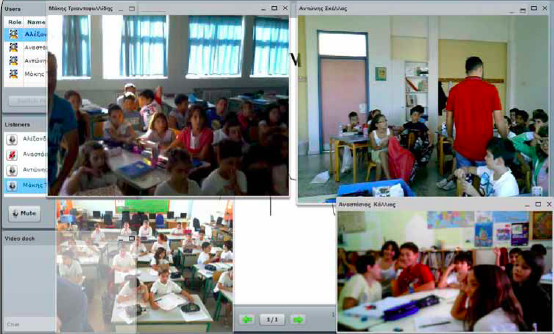
Scenarios: Easing transitions
Scenarios in action provide a roadmap for the incubation-to-acceleration phase, i.e. the transition from the small, pilot scale to the large scale utilization of ICT in education, school innovation and Resource-Based Learning
School example Classroom example 1: 3D printing @ schools Classroom example 2: Love of reading Emerging practice: engaging the parents Scenarios in action from another project |
|

